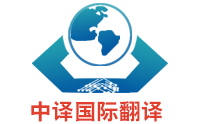

推荐 +MORE
·影视翻译 ·合同翻译 ·科技翻译 ·医学翻译 ·法律翻译 ·金融翻译 ·证件翻译 ·文学翻译 ·图书翻译 ·工程翻译 解决方案 SOLUTIONS 专业流程 WORKFLOW 翻译技术 TRANSLATION TECHNOLOGY 填写询价表 ONLINE INQUIRY时间:2021-12-09 17:38:08 作者:管理员
论文翻译具有一定的难度,需要有一定的论文写作能力,所以对于译员的要求比较高,今天医学翻译公司给大家分享一下论文翻译的技巧有什么?
Paper translation is difficult and requires a certain writing ability, so the requirements for translators are relatively high. What are the skills of paper translation that medical translation companies share with you today?
根据英汉两种语言不同的思维方式、语言习惯和表达方式,在翻译时增添一些词、短句或句子,以便更准确地表达出原文所包含的意义。这种方式多半用在汉译英里。另外,在汉译英时还要注意增补一些原文中暗含而没有明言的词语和一些概括性、注释性的词语,以确保译文意思的完整。总之,通过增译,一是保证译文语法结构的完整,二是保证译文意思的明确。而减译法相对应的一种翻译方法,即删去不符合目标语思维习惯、语言习惯和表达方式的词,以避免译文累赘。增译法的例句反之即可。
According to the different ways of thinking, language habits and expressions between English and Chinese, some words, short sentences or sentences are added to the translation so as to express the meaning contained in the original text more accurately. This method is mostly used to translate miles into Chinese. In addition, when translating from Chinese to English, attention should also be paid to adding some words implied but not explicitly stated in the original text and some general and annotative words to ensure the integrity of the meaning of the translation. In a word, by adding translations, the first is to ensure the integrity of the grammatical structure of the translated text, and the second is to ensure the clarity of the meaning of the translated text. The corresponding translation method of subtraction is to delete words that do not conform to the thinking habits, language habits and expressions of the target language in order to avoid redundancy in the translation. The opposite is true of the example sentences in the augmented translation method.
这是两种相对应的翻译方法。拆句法是把一个长而复杂的句子拆译成若干个较短、较简单的句子,通常用于英译汉;合并法是把若干个短句合并成一个长句,一般用于汉译英。
These are two corresponding translation methods. The disassembly method is to decompose a long and complex sentence into several shorter and simpler sentences, usually used in English-Chinese translation; the merging method is to merge several short sentences into one long sentence, usually used in Chinese-English translation.
这两种方法通常用于汉译英,偶尔也用于英译汉。所谓正译,是指把句子按照与汉语相同的语序或表达方式译成英语。所谓反译则是指把句子按照与汉语相反的语序或表达方式译成英语。
These two methods are usually used in Chinese-English translation and occasionally in English-Chinese translation. The so-called positive translation refers to the translation of sentences into English according to the same word order or expression as Chinese. The so-called reverse translation refers to the translation of sentences into English according to the word order or expression opposite to Chinese.
在汉语中,定语修饰语和状语修饰语往往位于被修饰语之前;在英语中,许多修饰语常常位于被修饰语之后,因此翻译时往往要把原文的语序颠倒过来。倒置法通常用于英译汉,即对英语长句按照汉语的习惯表达法进行前后调换,按意群或进行全部倒置,原则是使汉语译句安排符合现代汉语论理叙事的一般逻辑顺序。有时倒置法也用于汉译英。此时此刻,通过现代通信手段的奇迹,看到和听到我们讲话的人比整个世界历史上任何其他这样的场合都要多。
In Chinese, attributive modifiers and adverbial modifiers often precede the modifiers; in English, many modifiers often precede the modifiers, so the word order of the original text is often reversed in translation. Inversion is usually used in English-Chinese translation, that is to say, long English sentences are exchanged back and forth according to the customary expression of Chinese, and all of them are inverted according to the group of meanings. The principle is to make the arrangement of Chinese sentences conform to the general logical order of modern Chinese theoretical narration. Sometimes inversion is also used in Chinese-English translation. At this moment, through the miracle of modern means of communication, more people see and hear us than on any other occasion in the history of the world.
指翻译过程中为了使译文符合目标语的表述方式、方法和习惯而对原句中的词类、句型和语态等进行转换。具体的说,就是在词性方面,把名词转换为代词、形容词、动词;把动词转换成名词、形容词、副词、介词;把形容词转换成副词和短语。在句子成分方面,把主语变成状语、定语、宾语、表语;把谓语变成主语、定语、表语;把定语变成状语、主语;把宾语变成主语。在句型方面,把并列句变成复合句,把复合句变成并列句,把状语从句变成定语从句。在语态方面,可以把主动语态变为被动语态。
It refers to the transformation of parts of speech, sentence patterns and voices in the original sentence in order to make the translation conform to the expression, method and habits of the target language. Specifically, in terms of part of speech, nouns are transformed into pronouns, adjectives and verbs; verbs into nouns, adjectives, adverbs and prepositions; and adjectives into adverbs and phrases. In terms of sentence components, the subject is changed into adverbial, attributive, object and predicate; the predicate into subject, attributive and predicate; the attributive into adverbial and subject; and the object into subject. In the aspect of sentence pattern, we should change the juxtaposition sentence into compound sentence, compound sentence into juxtaposition sentence, adverbial clause into attributive clause. In the aspect of voice, we can change the active voice into the passive voice.
这种方法多用于英译汉。所谓包孕是指在把英语长句译成汉语时,把英语后置成分按照汉语的正常语序放在中心词之前,使修饰成分在汉语句中形成前置包孕。但修饰成分不宜过长,否则会形成拖沓或造成汉语句子成分在连接上的纠葛。
This method is mostly used in English-Chinese translation. The so-called "inclusion" refers to the translation of long English sentences into Chinese, putting the English postposition before the central word according to the normal word order of Chinese, so that the modifier can form a preposition in Chinese sentences. But the modifier should not be too long, otherwise it will lead to procrastination or entanglement in the connection of Chinese sentence components.
指把难以处理的句子成分用破折号、括号或前后逗号插入译句中。这种方法主要用于笔译中。偶尔也用于口译中,即用同位语、插入语或定语从句来处理一些解释性成分。
It refers to inserting difficult sentence elements into the translated sentence with dashes, brackets or commas. This method is mainly used in translation. Occasionally, it is also used in interpretation, that is, to deal with some explanatory elements with appositives, parentheses or attributive clauses.
指在进行英译汉时,为了使译文流畅和更符合汉语叙事论理的习惯,在捋清英语长句的结构、弄懂英语原意的基础上,彻底摆脱原文语序和句子形式,对句子进行重新组合。必须把大量时间花在确保关键人物均根据同一情报和目的行事,而这一切对身体的耐力和思维能力都是一大考验。因此,一旦考虑成熟,决策者就应迅速做出决策。
When translating from English to Chinese, in order to make the translation fluent and more in line with Chinese narrative theory, we should completely get rid of the word order and sentence form of the original text and recombine the sentences on the basis of clarifying the structure of long English sentences and understanding the original meaning of English. Much time must be devoted to ensuring that key people act on the same intelligence and purpose, which is a great test of physical endurance and mental ability. Therefore, once considered mature, decision makers should make decisions quickly.
是指单用某种翻译技巧无法译出时,着眼篇章,以逻辑分析为基础,同时使用转换法、倒置法、增译法、省译法、拆句法等多种翻译技巧的方法。
When a single translation skill is unable to be translated, we should focus on the text, take logical analysis as the basis, and use many translation techniques such as transformation, inversion, addition, omission, parsing and so on.
中译国际翻译(北京)有限公司
China International Translation service Co., Ltd.

服务范围
全国20多家分支机构,
用本地译员满足客户需求

翻译资质
政府机构认可的涉外翻译公司,
精通全球80多种语言

质量保证
终身免费质保,
为您提供最放心的服务